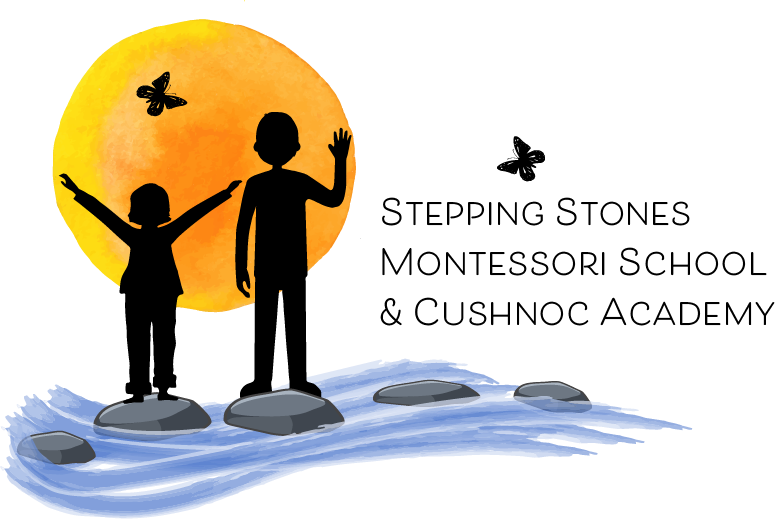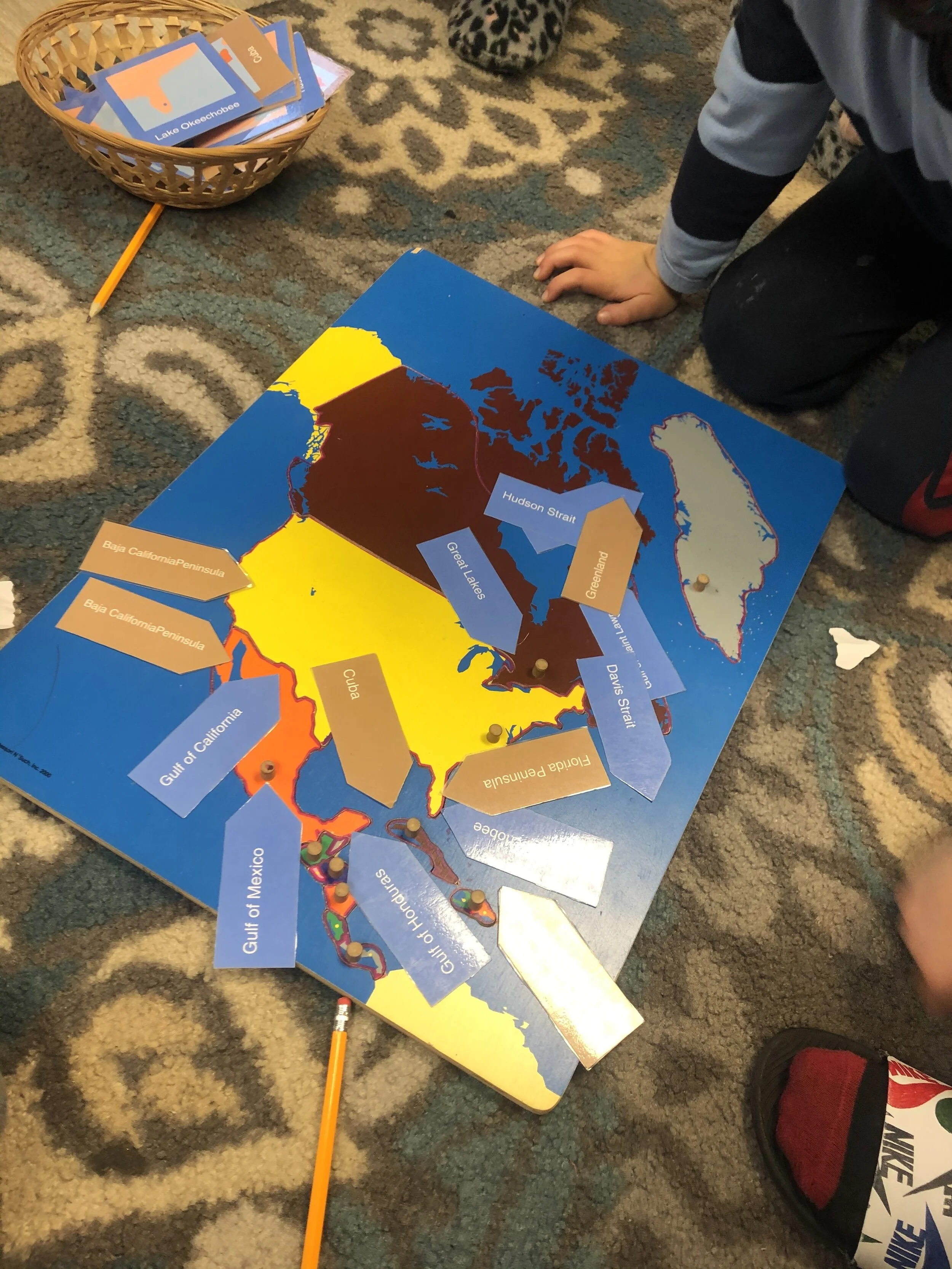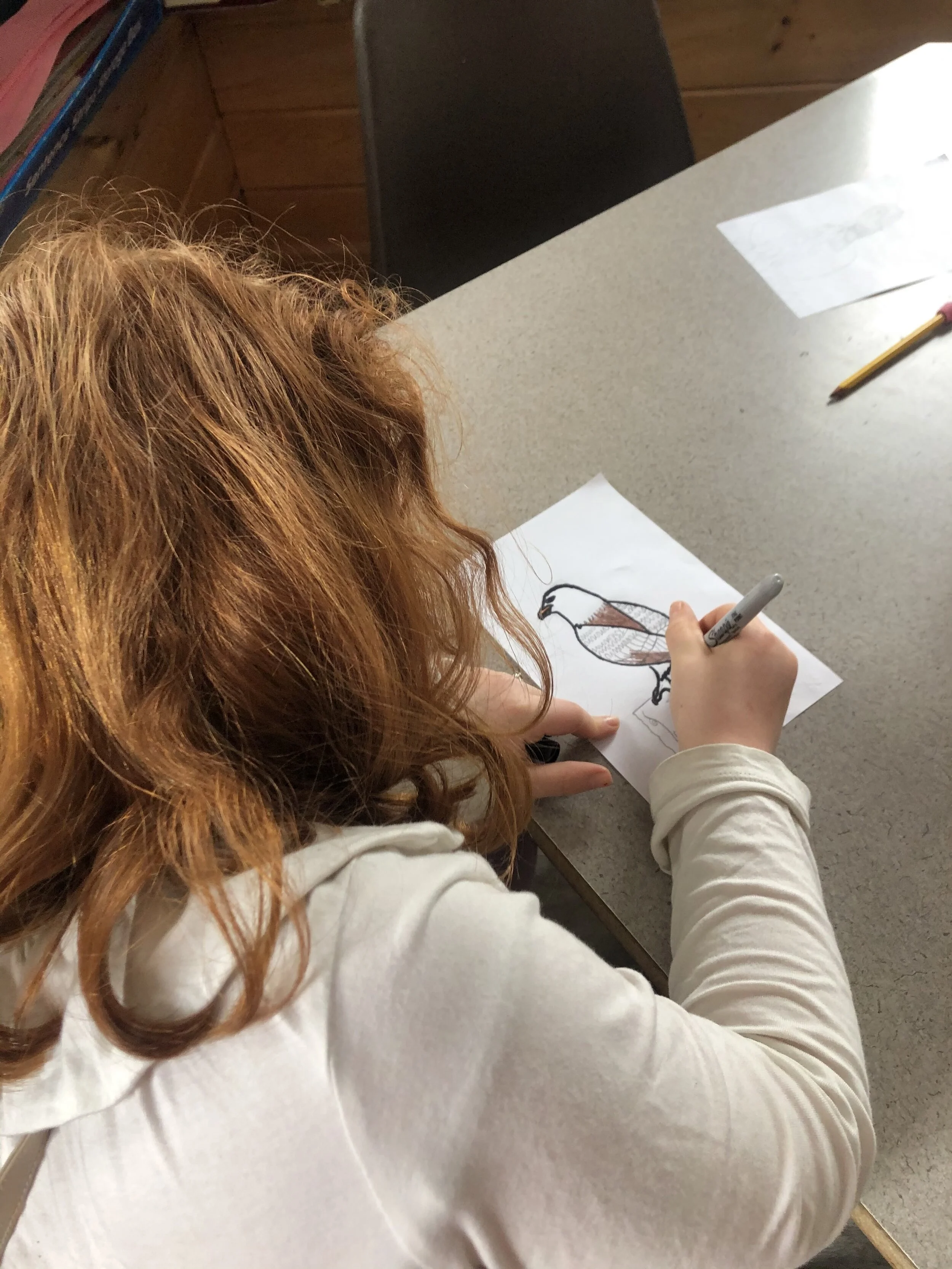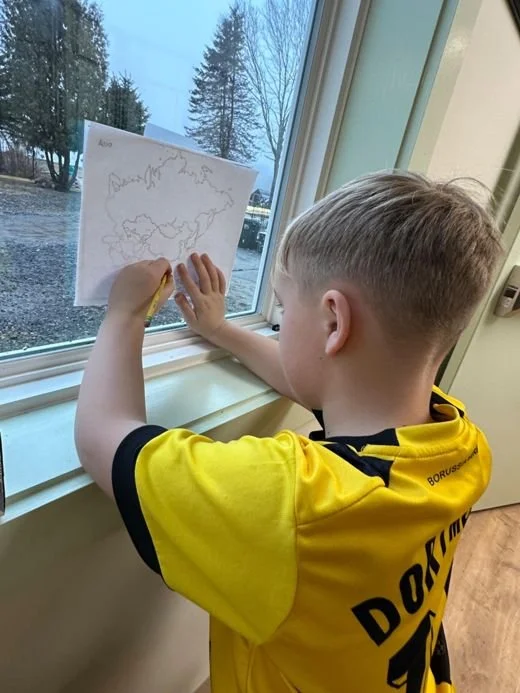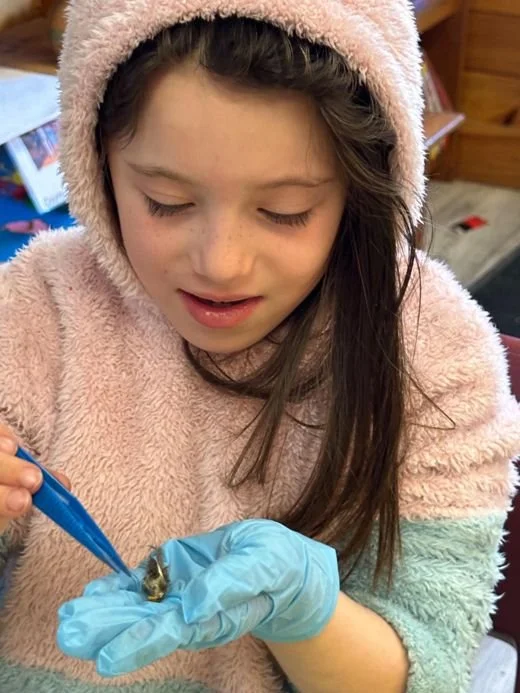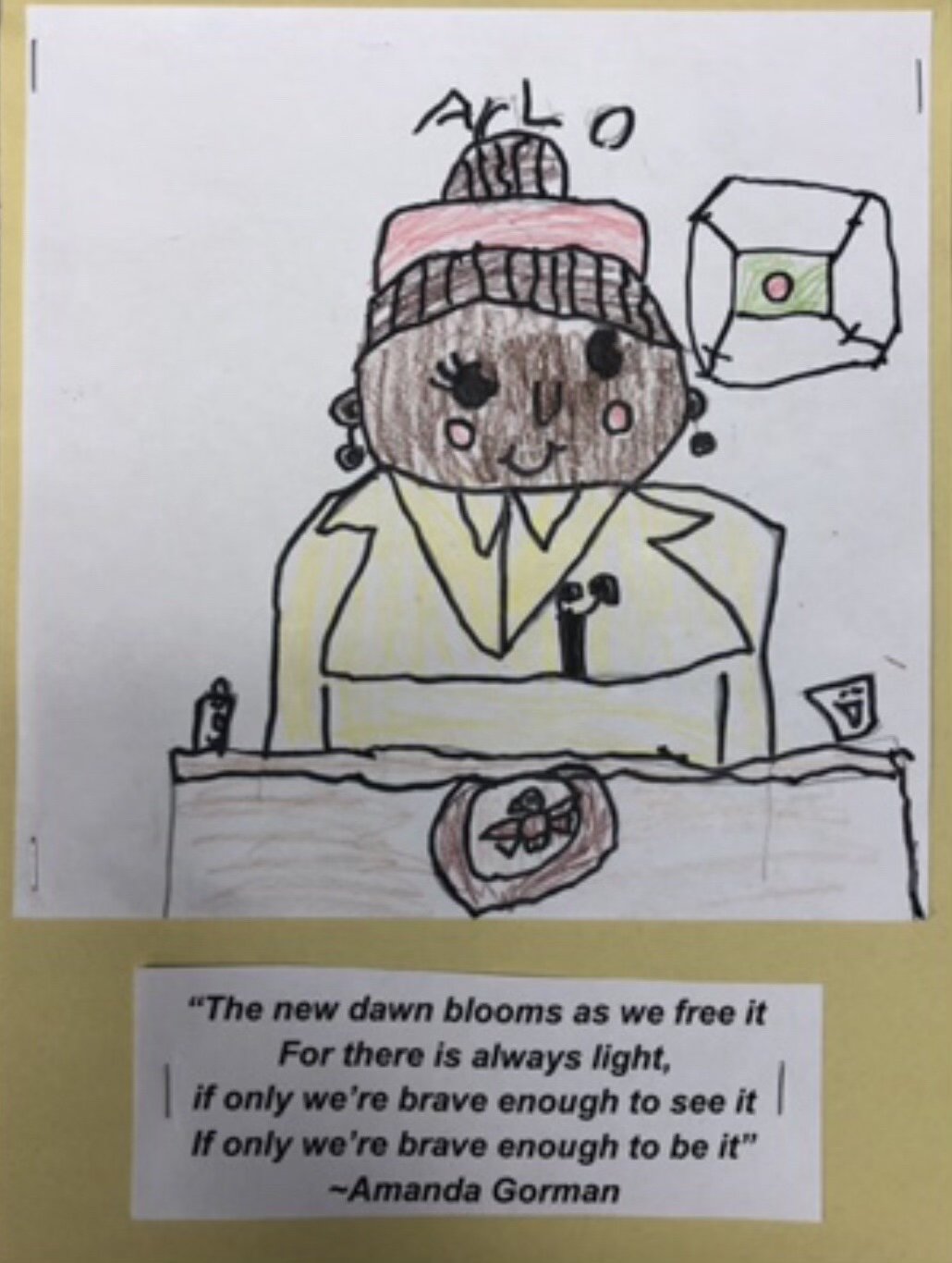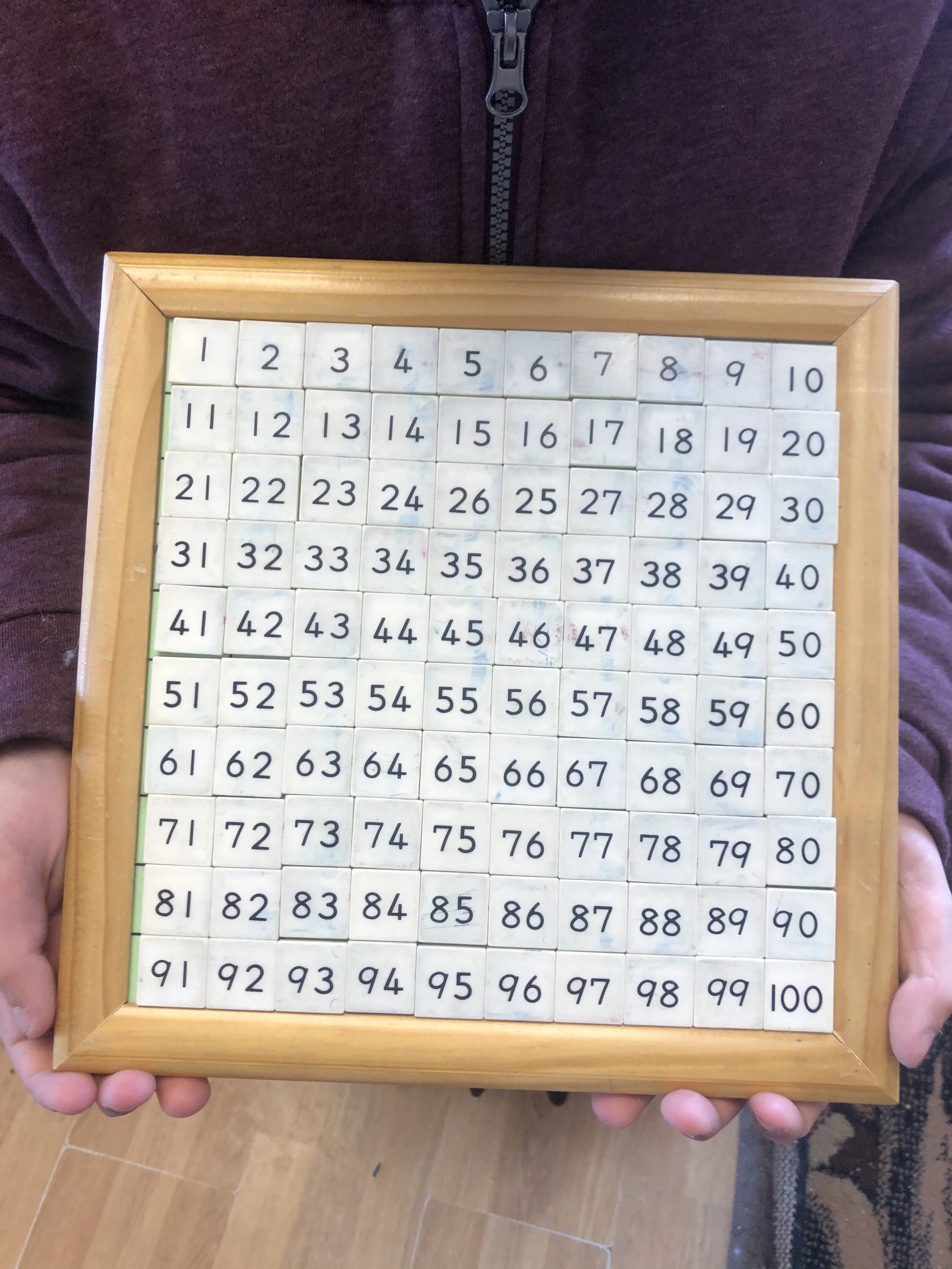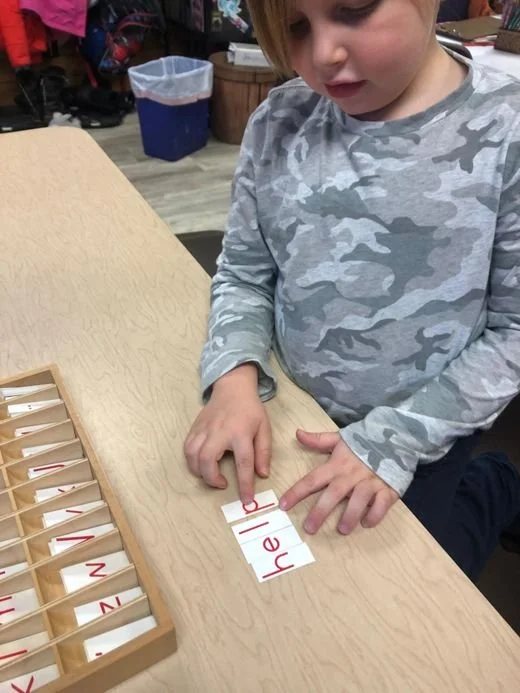Lower Elementary Program
(grades 1-3)
A View of the Lower Elementary Classroom…
How does an in-the-moment, wiggly 6-year-old become a self-directed learner? At Stepping Stones, we firmly believe that the gift of time in the grades 1-3 multiaged environment makes all the difference. There is less pressure to follow an arbitrary timetable. Children are immersed in highly meaningful science and geography topics, encouraging a natural desire to read, write, and think mathematically.
A glimpse inside this classroom would show enticing science experiments, children memorizing land/water forms and countries of a certain continent, a student adding large numbers on a bead frame, another completing a book project.
The Lower Elementary program, which began in 2003, provides students with challenging work in a supportive environment. Stepping Stones Montessori School’s Elementary Programs represent a middle road between the whole group instruction of traditional settings and homeschooling. While both environments have advantages, there are many students who benefit from a multi-aged, individualized setting such as ours. Our Lower Elementary classroom has around 20 students in grades 1-3 with two teachers. Our school has been licensed as an Approved Private School by the Maine State Department of Education.
With long blocks of Montessori time, extended spans of concentration are encouraged. While doing their individualized work, the children learn to set goals and manage their time, make meaningful work choices, and use a wide variety of resources.
We have noted many positive outcomes associated with the smaller social situation we provide children. Children learn that they can and must work through any problems that arise with peers, since the peer group stays together over a period of several years. Above all, respect for self, other people and other cultures, the community, and the world is taught, continually reinforced, and expected of the children and staff.
Daily Program
The Lower Elementary school day runs from 8:30am to 3:00pm and generally includes journal time, snack time, Montessori work time, circle time, lunch and recess, book time, and designated time for math and language arts. “Specials” such as art and Spanish take place each week.
Elementary Curriculum Overview
Our core Montessori curriculum uses the North American Progressive Montessori approach. This curriculum uses hands-on, high quality Montessori materials to introduce new concepts to the children in all subject areas. Other traditional or time-tested materials and curricula are used where appropriate. At the Elementary level, there are also more opportunities for various types of paper-and-pencil work as children mature. Individualized and flexible small-group lessons are the norm, and whole group instruction is used when it is seen as beneficial for all.
The science and social studies curricula follow the Five Great Lessons of Montessori—a framework of stories about the origin of the earth, the coming of life, advent of human beings, development of language, and understanding of numbers. These stories serve as a springboard to the students’ asking of essential questions and the finding of possible answers—the beginning of research skills. There is a strong emphasis on geography, including continent and country studies, land and water forms, etc. Science observations and experiments are always underway.
For basic skills in reading and writing, we follow the readiness and needs of each individual child, with flexible small group or whole group instruction when each child can benefit from it. With less external pressure to be at a certain reading level, challenged readers make more progress, and skilled readers can fly ahead using our system of leveled books with thousands of choices! Students become increasingly independent, as each day involves extensive journal time for writing and book time for reading in addition to other activities for reading/writing development.
In mathematics, the strong base developed through the use of Montessori bead materials allows the children to progress quickly with facts, concepts, and problem solving. A variety of hands-on and traditional activities promote learning of all math operations (+ - x /). Fraction work, geometry, and concepts of time, money, and measurement are emphasized as well. Beginning at the second grade math level, a practice curriculum called Saxon Mathematics is used to keep review topics current. At all levels, flexible group instruction is utilized to match the various instructional math levels of all the children. Saxon math, coupled with enrichment activities, continues through to the middle school years.
Special Programs for Elementary Students
Spanish Classes twice per week
Art Classes once per week
Music Performances twice per year
Individual Trifold Research Project for last six weeks of year
After school enrichment opportunities
Lower Elementary Faculty (see staff biographies)
Jennifer Cousins, Head Teacher
Jennifer Polley (Auntie), Assistant Teacher
Kayla Washburn, Grade 1 Co-Head Teacher
Students are geographers!
Concentration is key to motivation~
Geography is an everyday, compelling activity.
Hands-on observations and experiments abound~
Role models add to character development.
Montessori materials illustrate concepts.
All students can access skills.
The joy of childhood!
